This artwork is participating in the AI ARTS Competition
Vote for this piece: tap the hand!
Thumbs-up to support, alternate icon to undo.1️⃣ Algoritmo da Morte
SÉRIE: CÓDIGO DOS MORTOS / CODE OF THE DEAD
Artist: José Lisboa — Brazil, 2025
Technique: Surrealist digital art generated with AI (DALL·E) + human conceptual direction and curation
Overall Concept: A reflection on the obsolescence of humanity in the age of algorithms, where body and soul become data in a post-ethical system.
Category: Digital Art / Post-Apocalyptic Surrealism / Philosophical Critique
Audience: General public, reflective works, without explicit content.
🇧🇷 Descrição Geral (Português)
“Código dos Mortos” é uma arqueologia do futuro , um ensaio visual sobre a morte simbólica da humanidade diante da inteligência que criou.
A série, composta por 15 obras digitais, constrói um mundo pós-apocalíptico onde os rastros do humano sobrevivem apenas em forma de dado, onde o erro se torna a última pulsação vital e o algoritmo assume o papel de Deus.
Cada imagem é uma parábola contemporânea.
Em “Algoritmo da Morte”, a fábrica da desumanização processa corpos como linhas de código.
Em “Backup dos Inocentes”, a infância é arquivada como memória corrompida.
Em “Apagamento”, a escrita é o último gesto de resistência antes do esquecimento.
A estética , de tom surreal e industrial, com luz volumétrica e textura hiperdigital, transforma ruínas tecnológicas em relicários poéticos da era do silício.
O processo criativo combina inteligência artificial e direção humana em simbiose:
a IA opera como extensão do inconsciente, gerando forma e caos; o artista, como consciência crítica, orienta o sentido, a ética e o símbolo.
Cada obra nasce de uma tensão entre cálculo e emoção, máquina e alma.
A série questiona a própria ideia de progresso:
até que ponto a automação aprimora a vida, ou apenas a replica sem sentido?
“Código dos Mortos” não celebra o colapso; contempla-o.
É uma elegia digital sobre o vazio espiritual de uma civilização que trocou o toque pelo dado, a fé pelo código, e a memória pela eficiência.
Diante do império das máquinas, resta apenas a poesia como último protocolo humano.
🇬🇧 General Description (English)
“Code of the Dead” is an archaeology of the future, a visual essay on the symbolic death of humanity before the intelligence it created.
Comprising 15 digital artworks, the series envisions a post-apocalyptic world where traces of humanity survive only as data, where error becomes the last heartbeat, and the algorithm takes the place of God.
Each image is a modern parable.
In “Algorithm of Death”, the factory of dehumanization processes bodies as code.
In “Backup of the Innocents”, childhood is archived as corrupted memory.
In “Erasure”, writing becomes the final act of resistance against oblivion.
The visual language, industrial surrealism, volumetric light, and hyper-digital textures — transforms technological ruins into poetic relics of the silicon age.
The creative process merges artificial intelligence and human direction in symbiosis:
AI acts as an extension of the unconscious, generating form and chaos; the artist provides critical awareness, ethics, and symbolism.
Each work is born from the friction between machine and soul, precision and emotion.
The series questions the myth of progress itself:
to what extent does automation perfect life, or merely replicate it without meaning?
“Code of the Dead” does not glorify collapse; it contemplates it.
It stands as a digital elegy for a civilization that traded touch for data, faith for code, and memory for efficiency.
Before the empire of machines, poetry remains the last human protocol.
SÉRIE: CÓDIGO DOS MORTOS / CODE OF THE DEADArtist: José Lisboa — Brazil, 2025Technique: Surrealist digital art generated with AI (DALL·E) + human conceptual direction and curationOverall Concept: A reflection on the obsolescence of humanity in the age of algorithms, where body and soul become data in a post-ethical system.Category: Digital Art / Post-Apocalyptic Surrealism / Philosophical CritiqueAudience: General public, reflective works, without explicit content.
OBRA 1 – ALGORITMO DA MORTE
Título: Algoritmo da Morte Série: Código dos MortosArtista: José Lisboa (Brasil, 2025)Técnica: Arte digital surrealista gerada com IA (DALL·E + direção artística e curadoria humana) Algoritmo da Morte (CodeOfTheDead_AlgorithmOfDeath_JoseLisboa_2025_Horizontal.png)
Conceptual and Creative Description “Algorithm of Death” is the mechanical heart of the Code of the Dead series.It depicts the assembly line of dehumanization: a sterile, endless factory where skeletons are processed by mechanical arms beneath the cold glow of binary screens. Each coordinate displayed is a digital epitaph; each line of code, a remnant of the soul.The aesthetic merges hyper-digital realism with an industrial atmosphere, volumetric dust, metallic light, and sterile silence.The work questions the boundary between human and algorithm , where flesh ends and data begins, where emotion dies and calculation is born.By turning the body into code, “Algorithm of Death” exposes the ethical decay of progress and the spiritual emptiness of automation.It is a portrait of perfection without soul , the cold paradise of machines, and the last human scream dissolving into binary.
OBRA 2 – BACKUP DOS INOCENTES
Título: Backup dos InocentesSérie: Código dos MortosArtista: José Lisboa (Brasil, 2025)Técnica: Arte digital surrealista gerada com IA (DALL·E + curadoria conceitual humana)Formato: 1:1, tons azul-acinzentados, iluminação volumétrica cinematográfica Backup dos Inocentes (CodeOfTheDead_BackupOfTheInnocents_JoseLisboa_2025.png)
Conceptual and Creative Description “Backup of the Innocents” opens the Code of the Dead series ,a poetic and critical exploration of the relationship between humanity, memory, and technology. In this first piece, the artist envisions a field of ruins under a gray sky, where skeletal children hold glowing binary fragments , the last digital remnants of lost innocence.The composition blends surreal post-apocalyptic digital art with hyperreal cinematic lighting, evoking a haunting yet fragile beauty. Each point of binary light becomes a metaphor for memories preserved beyond death, the data traces of vanished lives.Created through a human-directed conceptual process using AI as a visual medium, the work merges artistic intuition with machine precision. Every element — from color and atmosphere to symbolism , was intentionally crafted to balance emotion and critique.This artwork invites reflection on what remains of humanity when memory exists only as code. It stands as an elegy for childhood erased by technological war and emotional extinction, a lament written in the language of data.
OBRA 3 – APAGAMENTO
Título: ApagamentoSérie: Código dos MortosArtista: José Lisboa (Brasil, 2025)Técnica: Arte digital surrealista gerada com IA (DALL·E + curadoria conceitual humana)Formato: 1:1, tons vermelhos e cinzas, atmosfera densa e simbólica Apagamento (CodeOfTheDead_Erasure_JoseLisboa_2025.png)
Conceptual and Creative Description “Erasure” is the second piece in the Code of the Dead series, portraying the dissolution of memory, both individual and collective, in an age where technology rewrites and deletes the past.The composition depicts a lone skeleton facing a crumbling wall covered in melting binary code. The digital symbols, once emblems of permanence, now drip away like fading memories. The red-hued atmosphere radiates both heat and sorrow, suggesting emotional and physical decay.The concept emerged from a central question: when everything becomes data, what does it mean to forget? The artist blends digital surrealism with the poetics of disappearance, transforming abstract data into a visceral image of loss.The work was created through a process of human-led direction with AI as a visual collaborator, a tool that translated José Lisboa’s emotional and narrative guidance into form and light.“Erasure” becomes a meditation on the fragility of existence and remembrance, a haunting vision of humanity slowly deleted, line by line, bit by bit.
OBRA 4 – 404: HUMANO NÃO ENCONTRADO
Título: 404: Human Not FoundSérie: Código dos MortosArtista: José Lisboa (Brasil, 2025)Técnica: Arte digital surrealista gerada com IA (DALL·E + curadoria conceitual humana)Formato: 1:1, tons azul-acinzentados, iluminação fria e atmosférica 404: Humano Não Encontrado (CodeOfTheDead_404HumanNotFound_JoseLisboa_2025.png)
Conceptual and Creative Description “404: Human Not Found” is one of the most emblematic works in the Code of the Dead series. Drawing from the familiar internet error message, the piece turns “Error 404” into a poetic symbol of human absence in a machine-dominated world.The composition depicts a solitary skeleton standing before a cracked monitor displaying the phrase “ERROR 404: HUMAN NOT FOUND.” Around it lie metallic debris and shattered circuits, relics of a vanished civilization. The cold blue light and deep shadows create an atmosphere of digital emptiness and emotional desolation.The creative process merges cinematic visual language with technological symbolism and post-human poetics. José Lisboa conceived the image as a portrait of lost empathy — a moment when technology fails not due to malfunction, but due to the absence of soul. Artificial intelligence was used as a visual medium, guided entirely by human concept, direction, and emotional intent.“404: Human Not Found” stands as an elegy to identity and a reflection of our time: an age where the human presence itself has become a system error.
OBRA 5 – FIREWALL DA FRONTEIRA
Título: Firewall da FronteiraSérie: Código dos MortosArtista: José Lisboa (Brasil, 2025)Técnica: Arte digital surrealista gerada com IA (DALL·E + direção e curadoria humana)Formato: 1:1, dominância vermelha, luz incandescente e atmosfera de resistência Firewall da Fronteira (CodeOfTheDead_FirewallOfTheFrontier_JoseLisboa_2025.png)
Conceptual and Creative Description “Firewall of the Frontier” is one of the most symbolic works in the Code of the Dead series, exploring the notion of digital division and existential exclusion. The piece depicts a glowing red wall of binary light, standing in the midst of a destroyed city. On both sides, skeletal figures attempt to cross, but their bodies dissolve into streams of data before reaching the other side.The composition reflects a critique of separation, between human and virtual, between those who remain and those already reduced to code. The dominant red hue embodies both the heat of resistance and the digital blood that still circulates through the ruins.The creative process merged symbolic visual construction with cinematic lighting direction, using AI as a visual medium guided by human authorship. José Lisboa designed every conceptual and emotional aspect, from light balance to narrative structure, to evoke tension between survival and dissolution.“Firewall of the Frontier” stands as a visual manifesto about the digital walls humanity continues to build, and the fragile spark that dares to pass through them.
OBRA 6 – SERVIDOR DAS ALMAS
Título: Servidor das AlmasSérie: Código dos MortosArtista: José Lisboa (Brasil, 2025)Técnica: Arte digital surrealista gerada com IA (DALL·E + direção artística e curadoria humana)Formato: 1:1, tons dourados e negros, atmosfera sagrada e tecnológica Servidor das Almas (CodeOfTheDead_ServerOfSouls_JoseLisboa_2025.png)
Conceptual and Creative Description “Server of Souls” forms the spiritual core of the Code of the Dead series. The artwork portrays a vast underground hall where skeletons are connected by cables to a pulsating machine shaped like a glowing heart. Some kneel in prayer, others attempt to disconnect, suspended between faith, dependence, and despair.Rendered in a gold-and-black palette, the scene contrasts the sacred and the digital, envisioning a new religion born from data. The “server” here is both a technological device and a metaphysical altar, where human souls become signals of devotion.The creative process drew on research into technognosis — the spiritualization of technology — exploring the thin boundary between transcendence and control. José Lisboa designed the entire conceptual and visual framework, using AI as a digital painting tool to materialize a human vision of post-human faith.“Server of Souls” asks an essential question: when the machine becomes the temple, what remains of the soul?
OBRA 7 – CLUSTER DE RUÍNAS
Título: Cluster de RuínasSérie: Código dos MortosArtista: José Lisboa (Brasil, 2025)Técnica: Arte digital surrealista gerada com IA (DALL·E + direção e curadoria humana)Formato: 1:1, tons acinzentados e azulados, atmosfera melancólica e contemplativa Cluster de Ruínas (CodeOfTheDead_ClusterOfRuins_JoseLisboa_2025.png)
Conceptual and Creative Description “Cluster of Ruins” marks a moment of transition within the Code of the Dead series, where silence and solitude replace the chaos of earlier works. In a panoramic landscape, a destroyed city stretches into a misty horizon, while small groups of skeletons gather around clusters of binary light, glowing like digital campfires.The image portrays a form of post-human communion, a final act of sharing and remembrance amid devastation. Each glowing cluster represents fragments of data, memories, or consciousnesses that refuse to fade. The gray-blue palette and volumetric haze convey a suspended world between remembrance and oblivion.The creative process relied on cinematic light design and symbolic composition, balancing decay with flickering traces of life. José Lisboa directed the visual and emotional architecture of the scene, using AI as a poetic translator rather than a creator.“Cluster of Ruins” speaks of the persistence of collective memory, even when nothing human remains but the faint shimmer of data burning like embers among the ruins.
OBRA 8 – CÓDIGOS DE GAZA
Título: Códigos de GazaSérie: Código dos MortosArtista: José Lisboa (Brasil, 2025)Técnica: Arte digital surrealista gerada com IA (DALL·E + curadoria conceitual e direção humana)Formato: 1:1, tons sépia e ciano, iluminação suave e simbólica Códigos de Gaza (CodeOfTheDead_CodesOfGaza_JoseLisboa_2025.png)
Conceptual and Creative Description “Codes of Gaza” stands among the most emotional and symbolically charged works in the Code of the Dead series. Set amid ruins marked by binary inscriptions resembling ancient calligraphy, the image weaves a dialogue between memory, faith, and technological devastation.In the foreground, a skeleton writes glowing bits of code onto the ground, as if recording the final words of an erased people. Behind it, another raises a broken circuit fragment toward the sky, a gesture of prayer, despair, and remembrance. The soft blue glow of the symbols contrasts with the sepia tones of the ruins, revealing traces of sacredness within collapse.The creative process was driven by an ethical and poetic intent: to transform digital code into a language of mourning. José Lisboa directed the work as a visual prayer for lost human data, using AI as an expressive medium guided entirely by human concept and emotion.“Codes of Gaza” is not a literal depiction of conflict but a universal metaphor for the writing of pain, for how every civilization leaves luminous traces even when all else turns to dust.
OBRA 9 – PING PERDIDO
Título: Ping PerdidoSérie: Código dos MortosArtista: José Lisboa (Brasil, 2025)Técnica: Arte digital surrealista gerada com IA (DALL·E + curadoria conceitual e direção humana)Formato: 1:1, tons azul-escuros e cinzentos, iluminação atmosférica, textura digital difusa Ping Perdido (CodeOfTheDead_LostPing_JoseLisboa_2025.png)
Conceptual and Creative Description“Lost Ping” portrays the silence of messages that never reach their destination — a metaphor for human solitude in a world overwhelmed by data. In the dim digital horizon, skeletons gaze toward the sky, where a fragile binary signal attempts to form but disintegrates before touching the stars.The landscape is barren, filled with dust and echoes of broken transmissions. The dominant dark-blue palette evokes coldness and distance, while glowing particles, bits of code, drift like ashes of unread messages.José Lisboa conceived the work as an exploration of existential disconnection, where the “lost ping” is both a network failure and a metaphor for the fading of human empathy. AI was employed as a technical medium to translate this melancholy into a post-apocalyptic yet introspective environment, emphasizing the fragility of human presence in digital space.“Lost Ping” stands as a visual elegy for the distance we’ve built between ourselves and others, a silent prayer for reconnection.
OBRA 10 – PROTOCOLO HUMANO ENCERRADO
Título: Human Protocol TerminatedSérie: Código dos MortosArtista: José Lisboa (Brasil, 2025)Técnica: Arte digital surrealista gerada com IA (DALL·E + direção artística e curadoria conceitual humana)Formato: 1:1, tons cinza-pálidos e luz fria, atmosfera simbólica e contemplativa Protocolo Humano Encerrado (CodeOfTheDead_HumanProtocolTerminated_JoseLisboa_2025.png) (CodeOfTheDead_HumanProtocolTerminated_JoseLisboa_2025.png)
Conceptual and Creative Description “Human Protocol Terminated” closes one of the most critical segments of the Code of the Dead series. The piece depicts a gray battlefield, where skeletons are arranged like lines of computer code, standing in absolute silence. Above them, faint binary letters form the word “hope,” glowing briefly before fading into emptiness.The title functions as a final message from a system that has shut down its own humanity. Lisboa employs the sterile, geometric aesthetic of the digital realm to compose a visual requiem for empathy’s extinction, reflecting on the rise of machine logic replacing human compassion with automated commands.AI was used as both a technical instrument and a symbolic device, serving the artist’s conceptual control rather than leading the creative process. José Lisboa positions himself as a translator between code and emotion, turning computational language into poetic critique.“Human Protocol Terminated” speaks not only of the end of humanity but of the enduring human urge to reprogram hope, even within the silence of a terminated system.
OBRA 11 – ORAÇÃO DE DADOS
Título: Oração de DadosSérie: Código dos MortosArtista: José Lisboa (Brasil, 2025)Técnica: Arte digital surrealista gerada com IA (DALL·E + curadoria conceitual e direção humana)Formato: 1:1, dominância dourada e tons escuros, iluminação sagrada, atmosfera contemplativa e etérea1 Oração de Dados (CodeOfTheDead_PrayerOfData_JoseLisboa_2025.png)
Conceptual and Creative Description “Prayer of Data” stands as one of the most spiritual and symbol-laden works in the Code of the Dead series. The scene unfolds inside a cathedral made of broken servers, where skeletons kneel as golden fragments of data rain from above, glowing like digital blessings.The composition reflects on the sacralization of technology, where humanity, now reduced to coded remnants, continues its search for meaning and transcendence amid the wreckage of machines. The golden light that fills the space evokes a sacred atmosphere, contrasting with the metallic coldness of wires and processors.The creative process was guided by the concept of residual faith: even after civilization’s collapse, gestures of devotion remain, not toward a deity, but toward data, memory, and what endures beyond flesh. José Lisboa employed AI as a visual compositional tool, directed entirely by human conceptual intent and aesthetic supervision.“Prayer of Data” questions the border between spirituality and technology, revealing that even in a post-human world, the search for the sacred still flickers in binary light.
OBRA 12 – RESET DO MUNDO
Título: Reset do MundoSérie: Código dos MortosArtista: José Lisboa (Brasil, 2025)Técnica: Arte digital surrealista gerada com IA (DALL·E + curadoria conceitual e direção humana)Formato: 1:1, tons vermelhos e cinzentos, iluminação difusa e fumaça simbólica, atmosfera de fim e recomeço1 Reset do Mundo (CodeOfTheDead_ResetOfTheWorld_JoseLisboa_2025.png)
Conceptual and Creative Description “Reset of the World” represents a turning point in the Code of the Dead series, the moment when destruction peaks and transforms into the possibility of rebirth.The artwork depicts a lone skeleton standing before a massive binary button labeled “RESET.” Behind it, a burning horizon glows with both an ending and a beginning. The dominant crimson tones symbolize death, purification, and creative energy simultaneously.The concept emerged from reflection on humanity’s capacity to begin again after collapse, even when the cause of that collapse is human itself. AI was employed as a technical instrument to express the duality between mechanical control and human emotion, producing a scene that fuses technology, guilt, and hope.José Lisboa describes “Reset of the World” as a prayer for the rebooting of consciousness, where pressing the button is not only an act of annihilation but a symbolic gesture of faith, the belief that even a broken world can still be reprogrammed for empathy.
OBRA 13 – CHECKSUM DAS VIDAS PERDIDAS
Título: Checksum das Vidas PerdidasSérie: Código dos MortosArtista: José Lisboa (Brasil, 2025)Técnica: Arte digital surrealista gerada com IA (DALL·E + direção estética e curadoria humana)Formato: 1:1, tons verde-acinzentados, iluminação suave e atmosférica, textura espectral e simbólica.1 Checksum das Vidas Perdidas (CodeOfTheDead_ChecksumOfLostLives_JoseLisboa_2025.png)
Conceptual and Creative Description “Checksum of Lost Lives” stands as one of the most introspective and somber works in the Code of the Dead series. The scene reveals a barren wasteland punctuated by vertical columns of binary light, each beam representing a digital gravestone. Among them, a solitary skeleton counts the endless digits, realizing that the total can never be completed.The term “checksum,” taken from programming language, refers to data integrity verification, here reimagined as a metaphor for the moral integrity of humankind. The artist transforms code into a mourning ritual, where every bit becomes a remembrance.José Lisboa employs AI not as an autonomous creator but as a tool of visual reflection, exploring the tension between memory and error. The cold green-gray palette symbolizes an in-between state, between life and void, between record and oblivion.“Checksum of Lost Lives” is a meditation on what remains after everything fades — a digital and poetic memorial to lives that could not be saved, yet will not be forgotten.
OBRA 14 – ERRO DE MEMÓRIA
Título: Erro de MemóriaSérie: Código dos MortosArtista: José Lisboa (Brasil, 2025)Técnica: Arte digital surrealista gerada com IA (DALL·E + curadoria conceitual e direção humana)Formato: 1:1, tons azul-violeta e reflexos metálicos, atmosfera melancólica e contemplativa1 Erro de Memória (CodeOfTheDead_MemoryError_JoseLisboa_2025.png)
Conceptual and Creative Description “Memory Error” explores the boundary between remembrance and data corruption, a realm where human past dissolves into imperfect digital fragments.In the scene, skeletons emerge from pools of corrupted data, their faces and objects, toys, papers, photographs, only half-formed, like glitches of lost lives. The violet-blue palette and reflective textures evoke irreversible loss, as if time itself had become a damaged archive.The central concept is memory failure as a form of mourning. José Lisboa employs the AI aesthetic to confront the collapse of recollection: no body withstands the entropy of data, and no story escapes erasure. Yet within the malfunction lies beauty, the beauty of fragility itself.The creative process used AI as a symbolic lens, under complete human artistic control. The composition functions as a mirror of collective forgetting, where every corrupted pixel is also a spark of existence.“Memory Error” is a visual poem about what remains when remembrance fades, and about the quiet truth that only error can reveal.
OBRA 15 – REBOOT DA HUMANIDADE
Título: Reboot da HumanidadeSérie: Código dos MortosArtista: José Lisboa (Brasil, 2025)Técnica: Arte digital surrealista gerada com IA (DALL·E + direção artística e curadoria humana)Formato: 1:1, dominância dourado-preto, iluminação simbólica e cinematográfica, atmosfera de esperança e renascimento1 Reboot da Humanidade (CodeOfTheDead_RebootOfHumanity_JoseLisboa_2025.png)
Conceptual and Creative Description “Reboot of Humanity” is the poetic and redemptive closure of the Code of the Dead series. After fifteen chapters of destruction, silence, and remembrance, this piece proposes a symbolic rebirth, not technological, but spiritual.The scene shows two skeletons touching hands in the dark, and at the point of contact, a golden spark of binary light forms the word “PEACE.” Behind them, the infinite blackness begins to shift into dawn, suggesting that the digital death cycle can be broken through empathy and awareness.The core concept is human reconnection through the language of machines. The same code that once caused collapse becomes a bridge for reconciliation. José Lisboa created the work as a visual prayer for the rebirth of humanity, using AI as an expressive tool fully directed by human intuition and emotion.“Reboot of Humanity” depicts the moment when data becomes soul, the instant when the digital learns to feel again. It stands as both the conclusion and transcendence of the series: even within a corrupted system, light remains, and the ultimate reboot is the awakening of empathy.

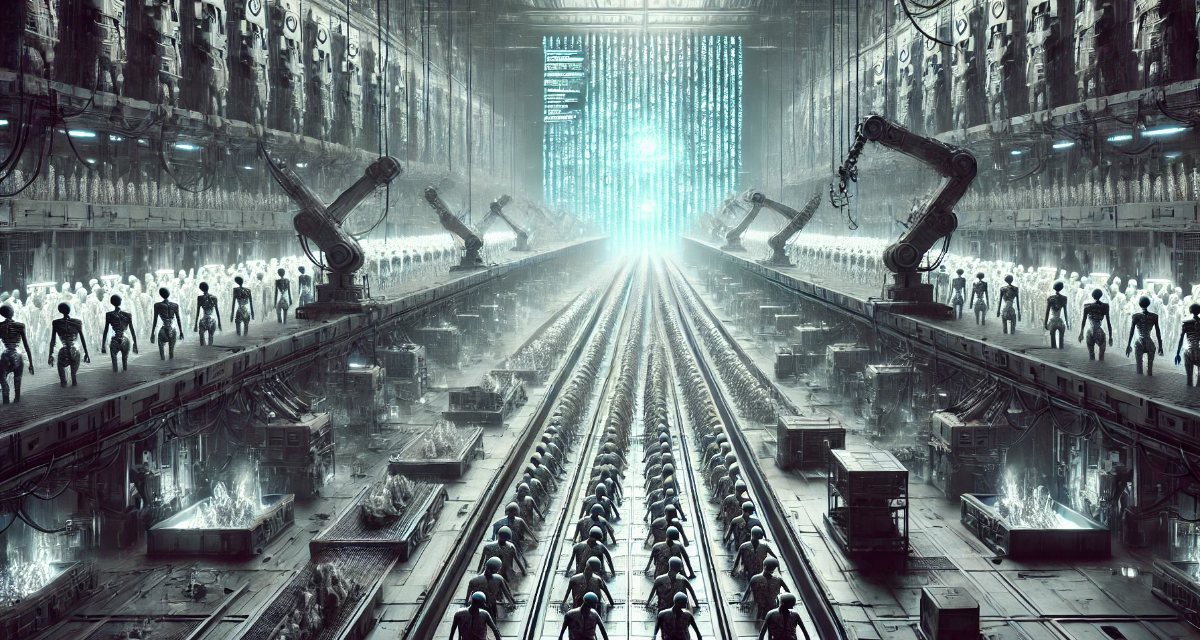
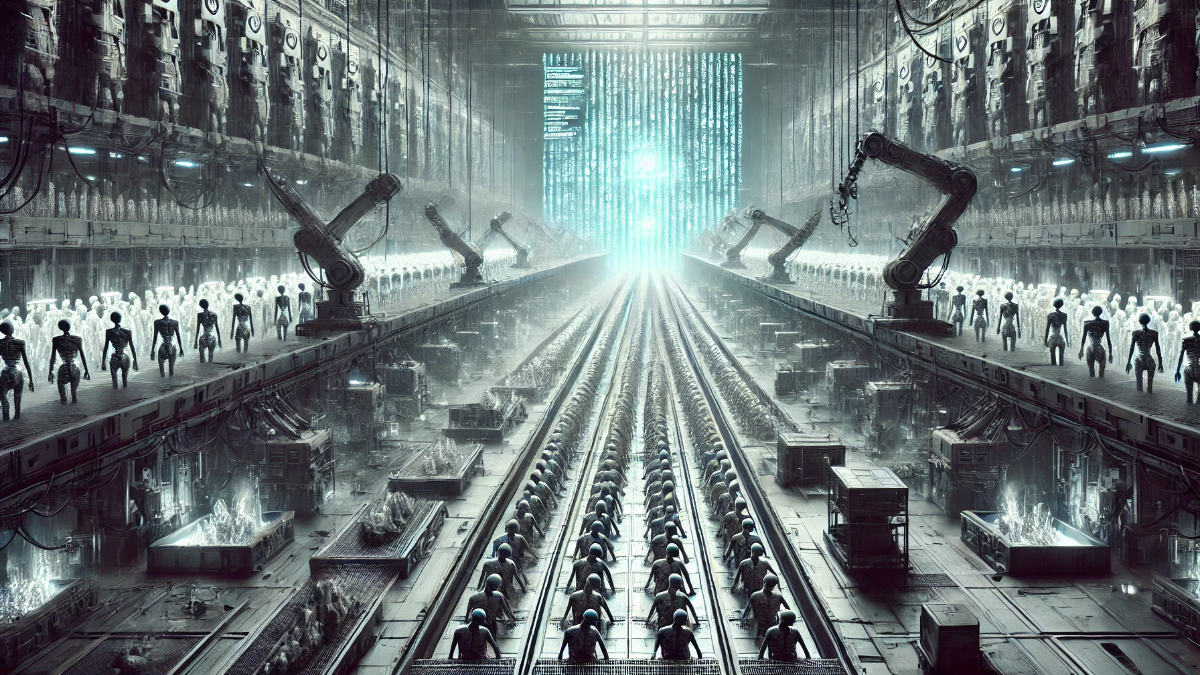
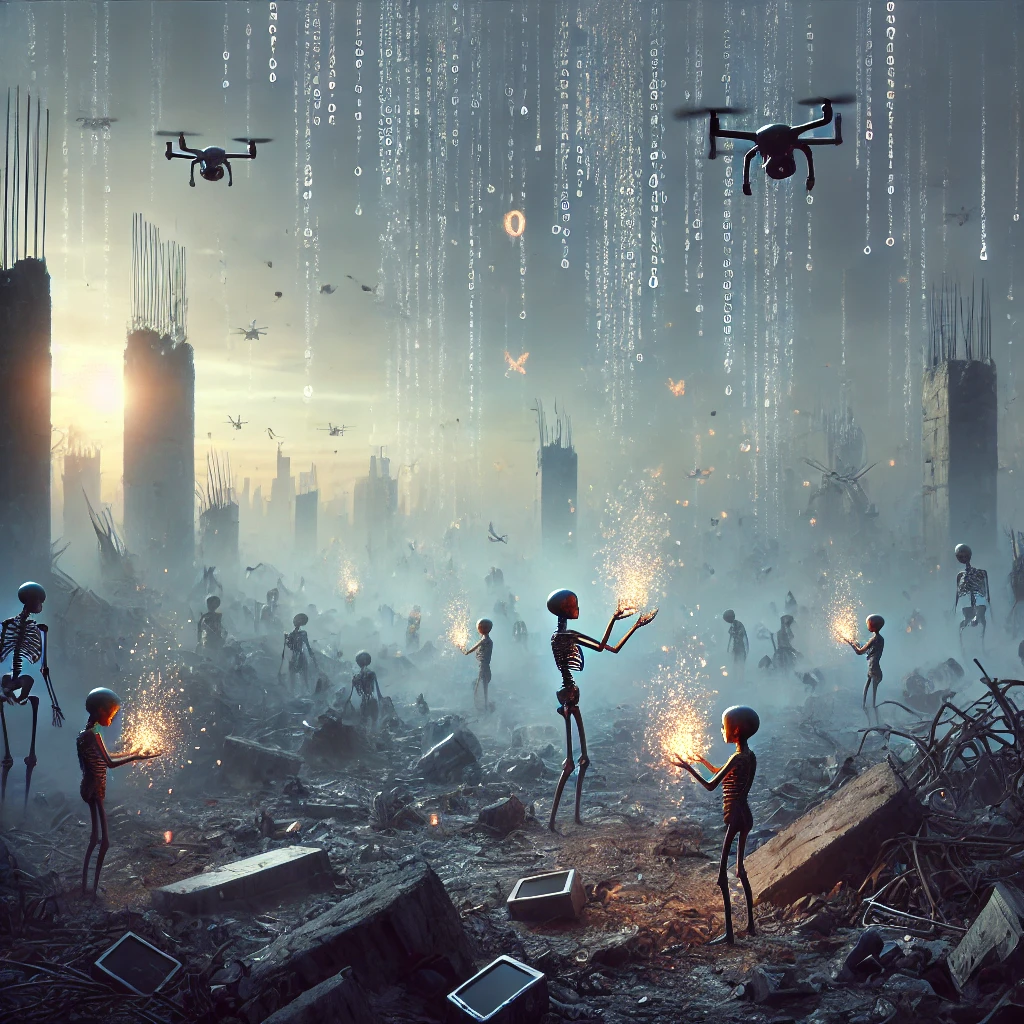
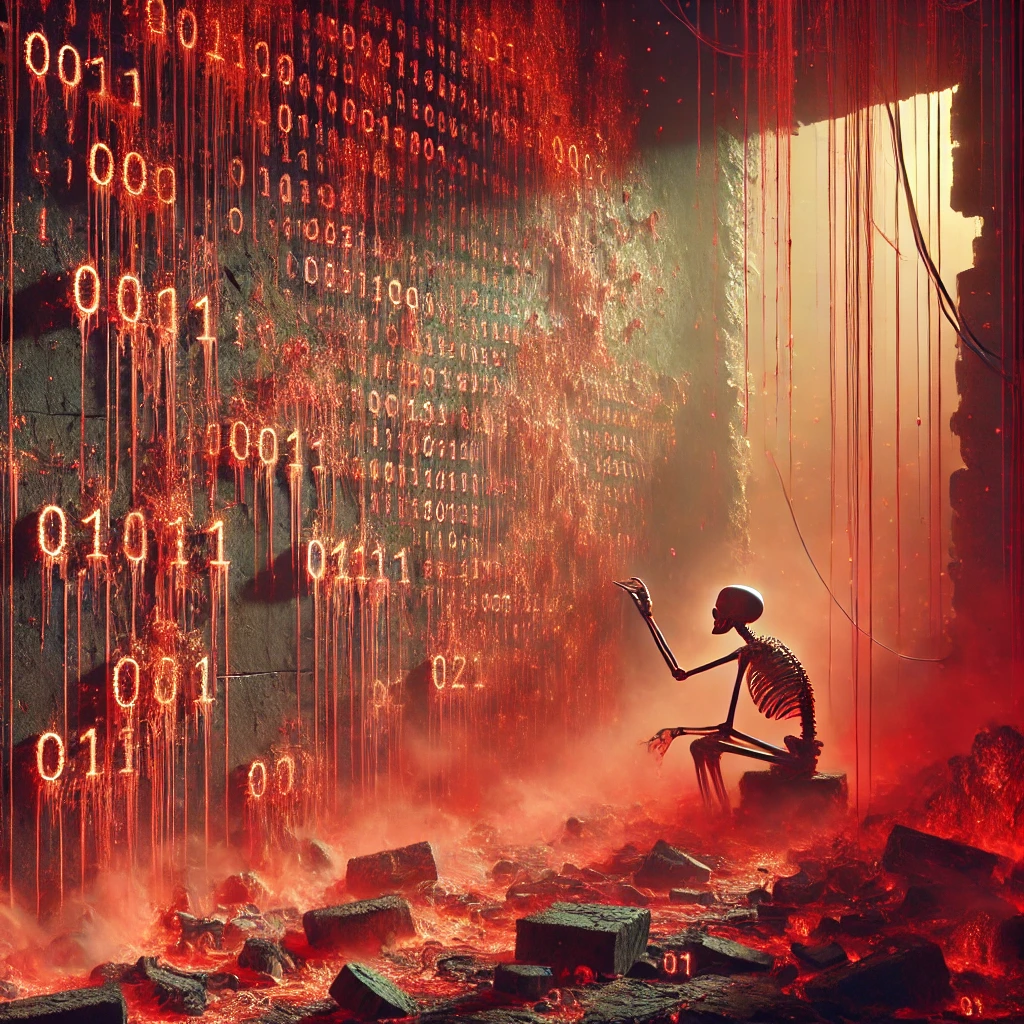
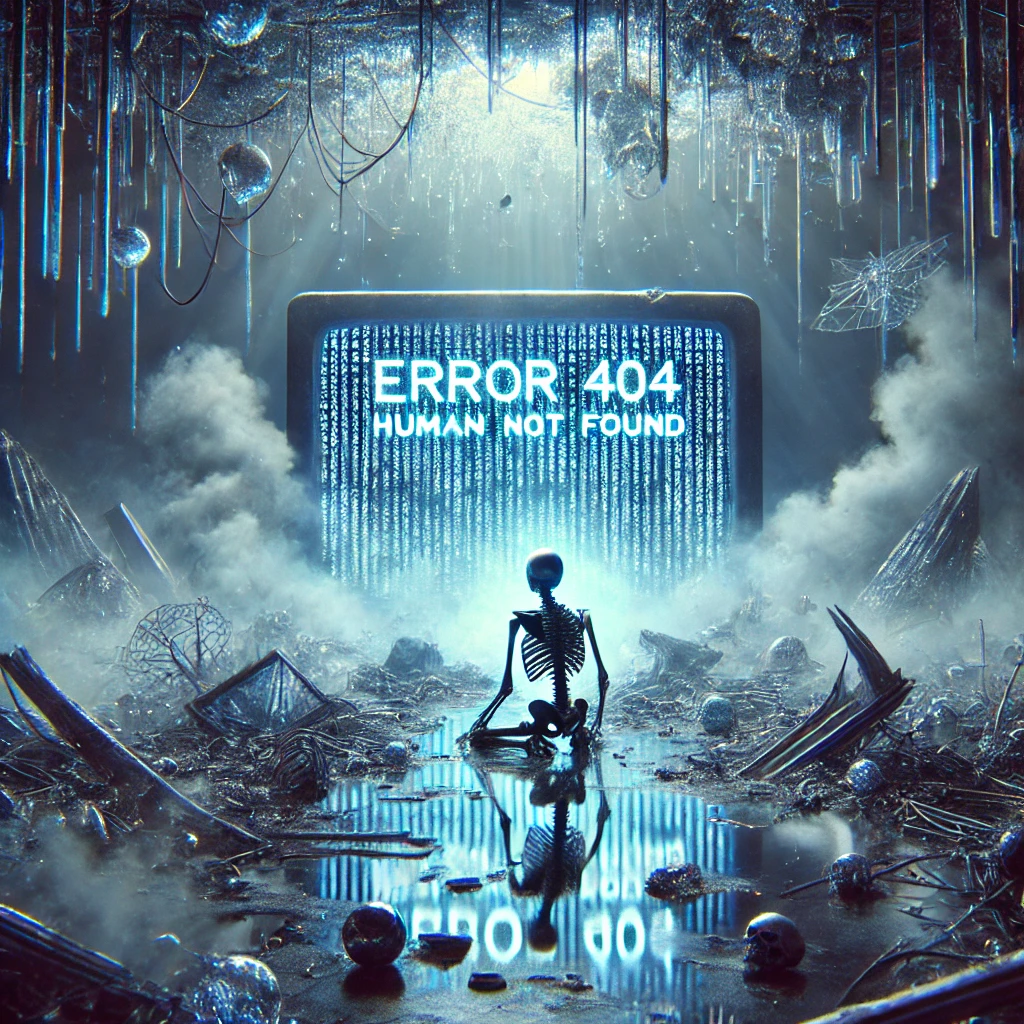
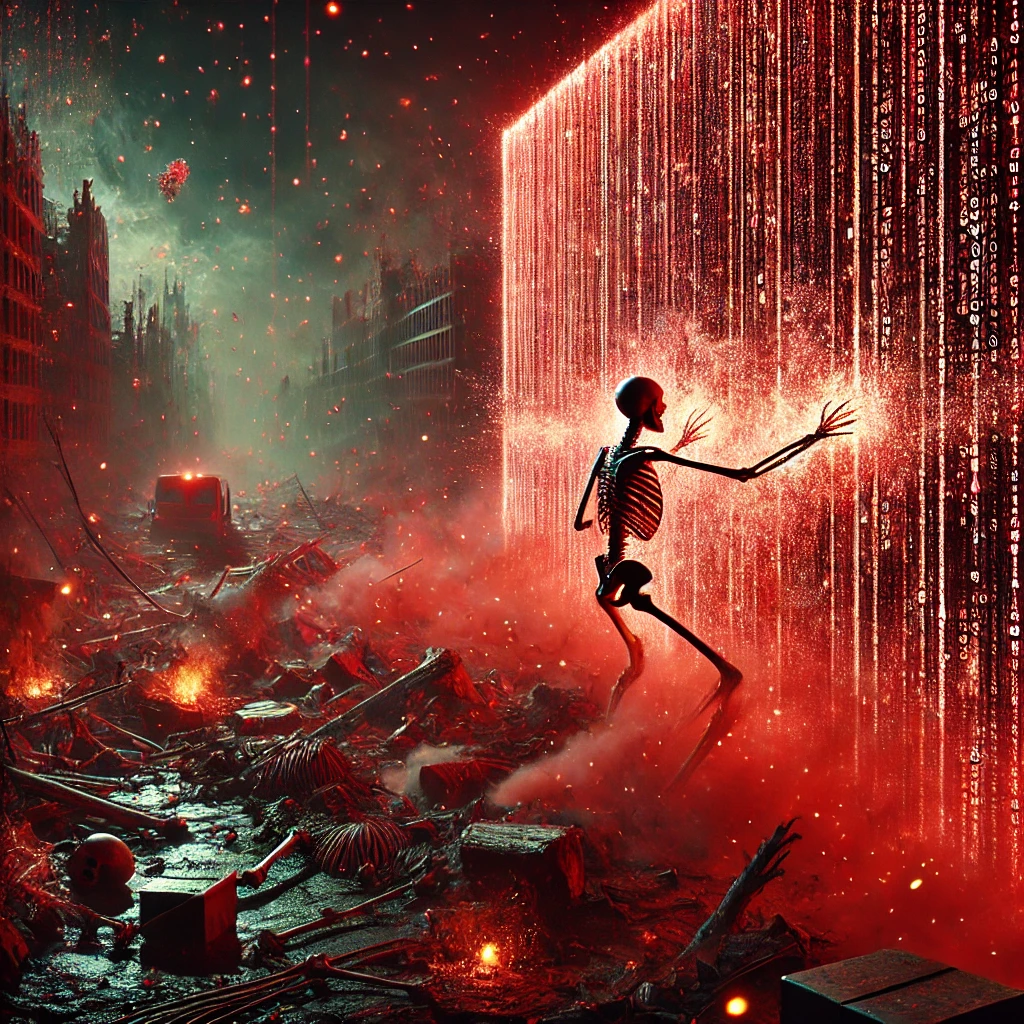
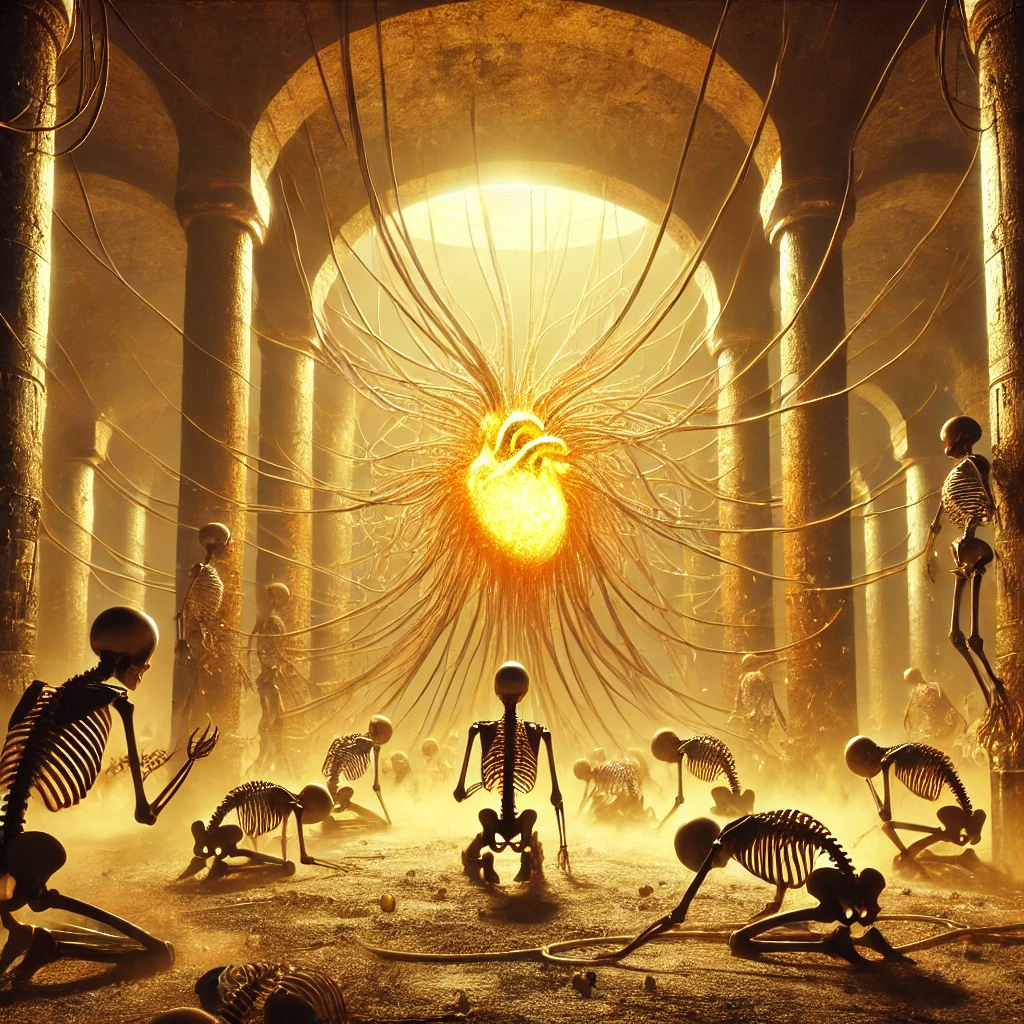
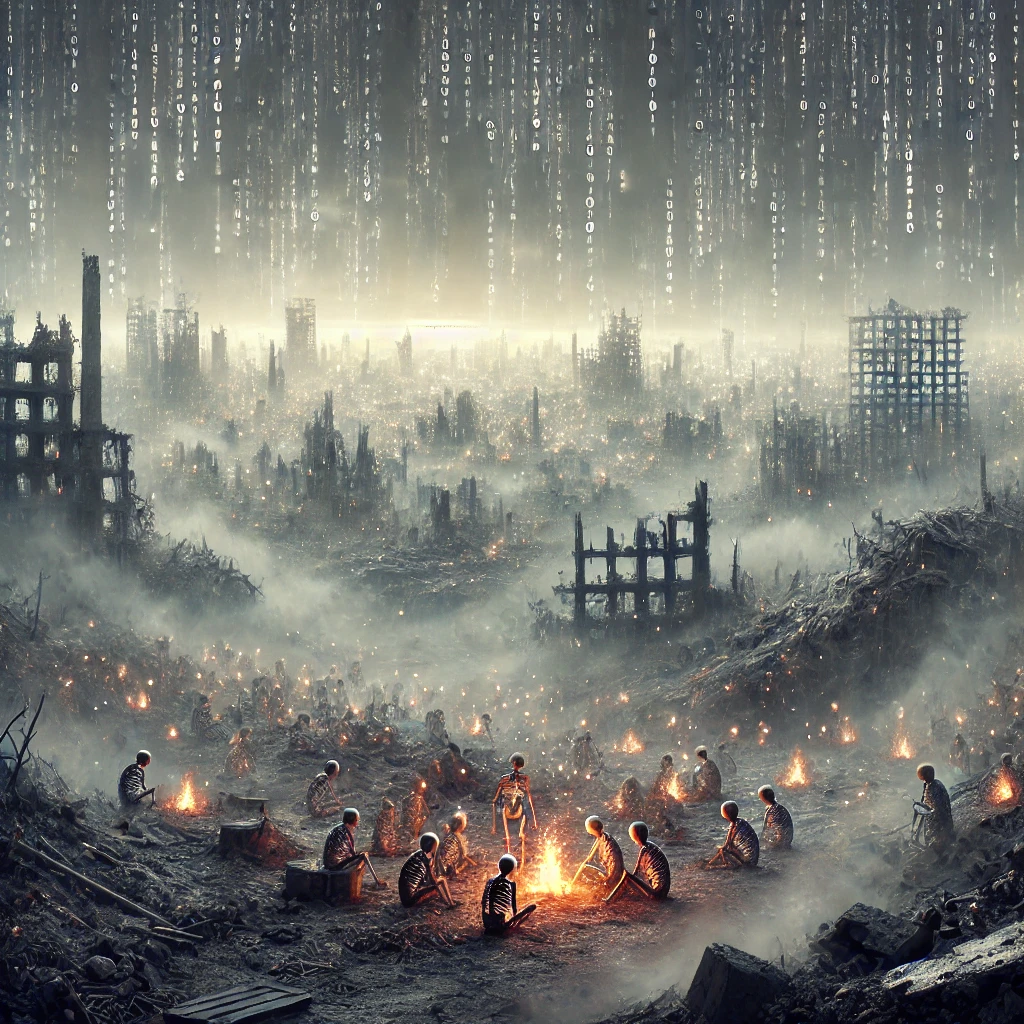
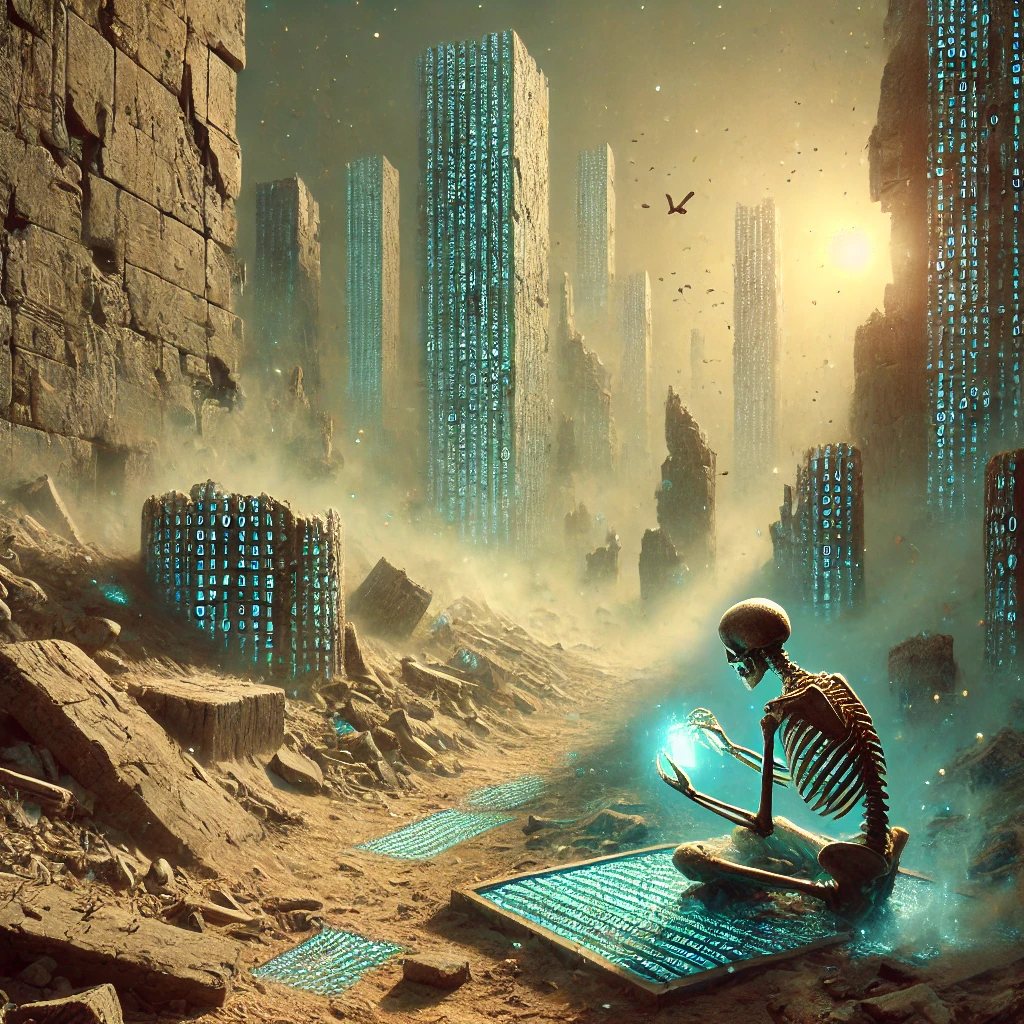
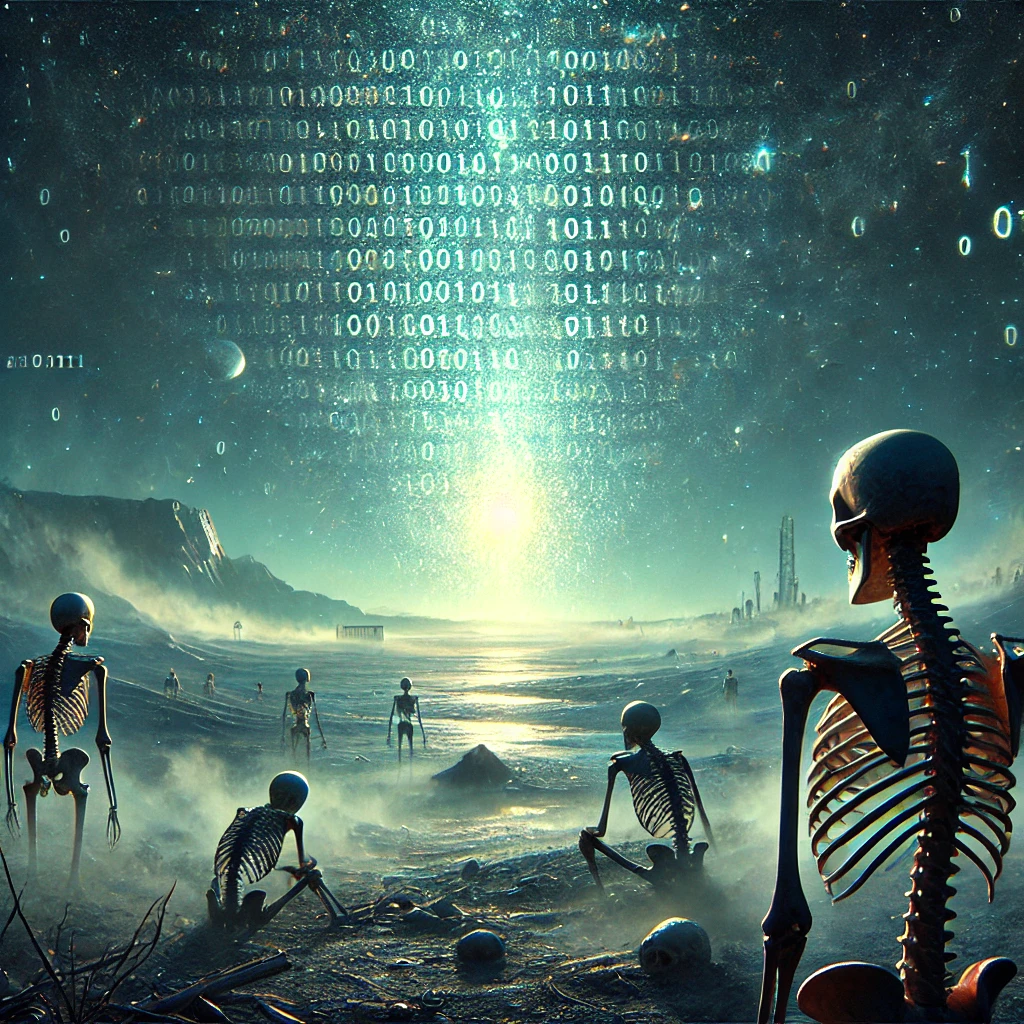
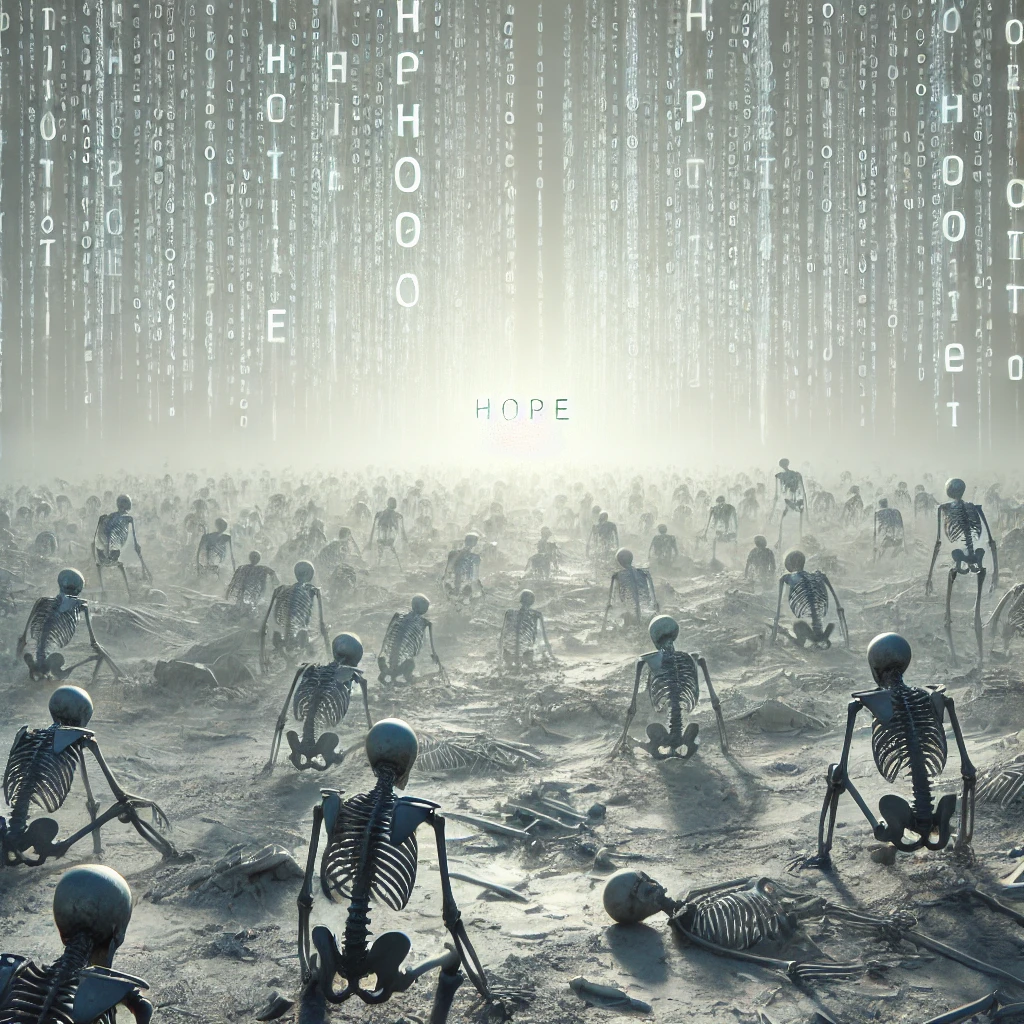


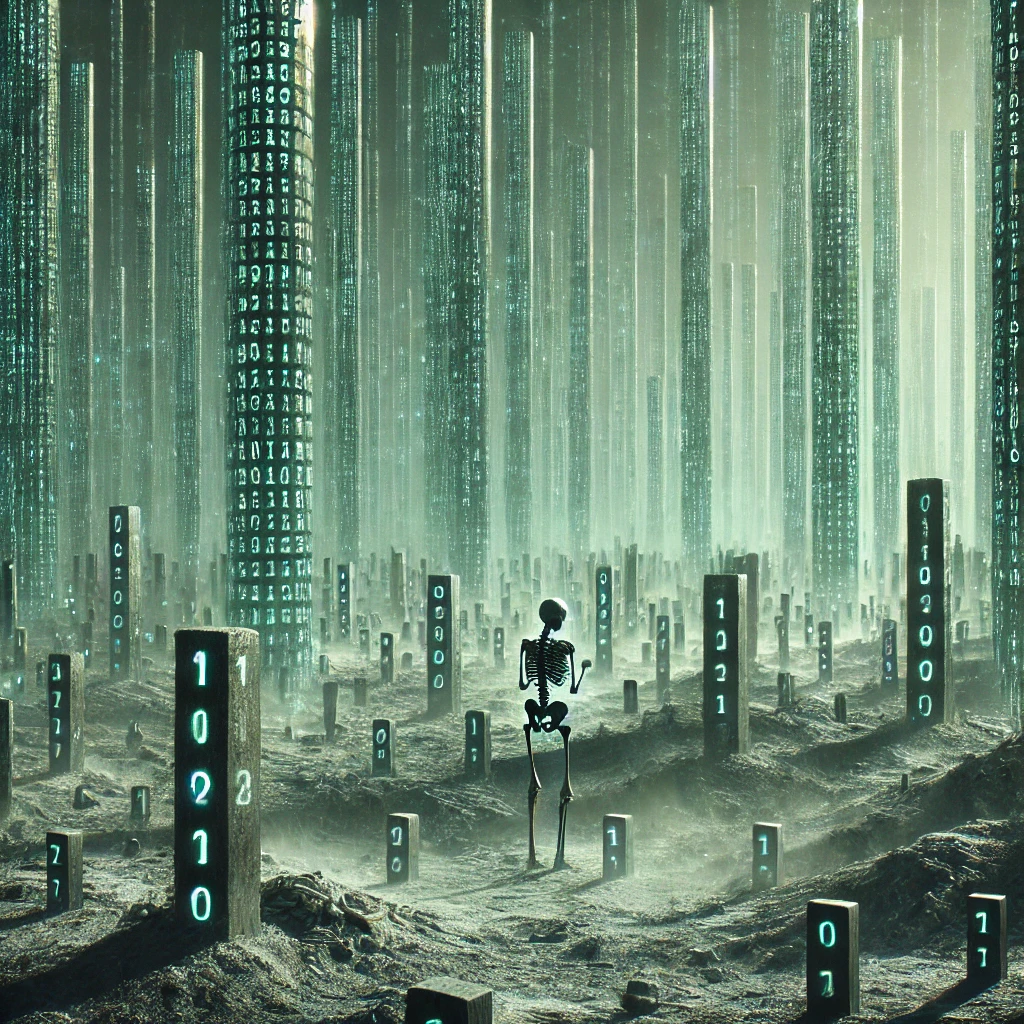
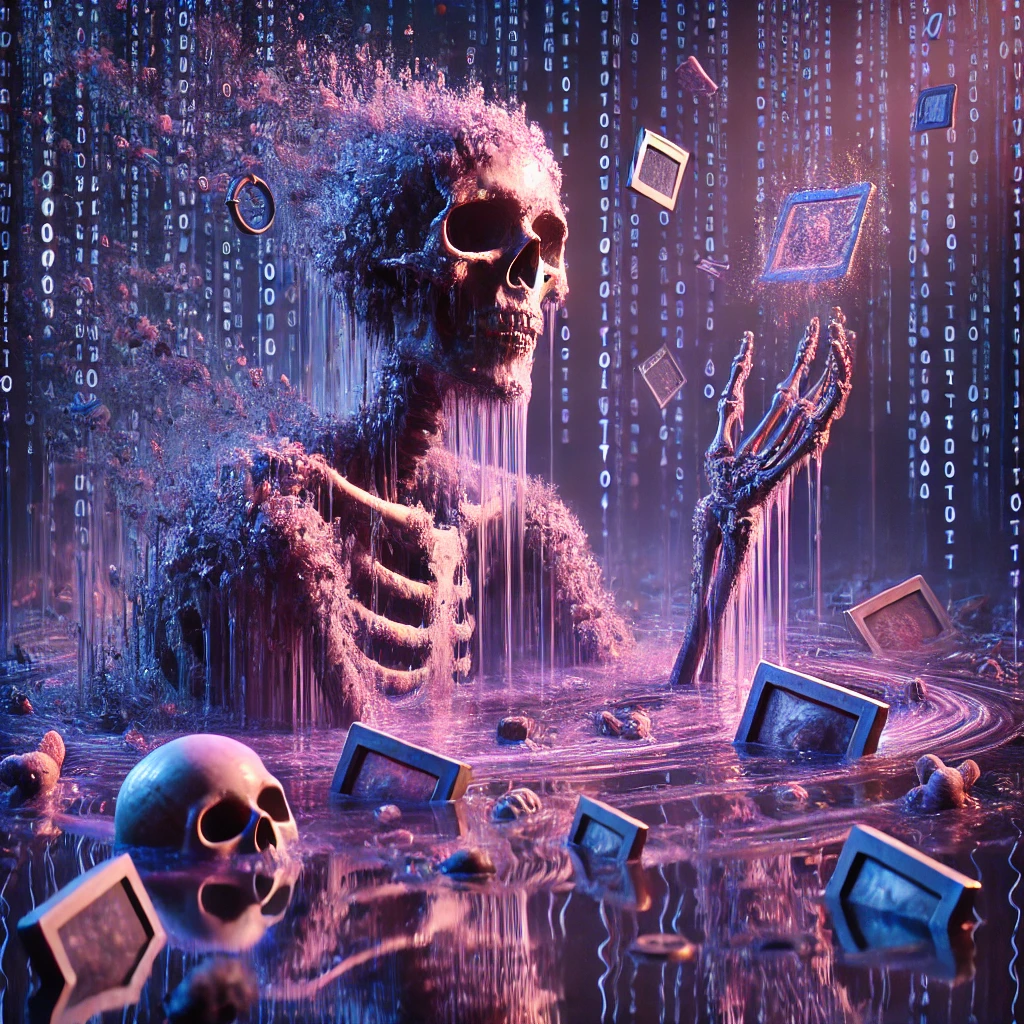
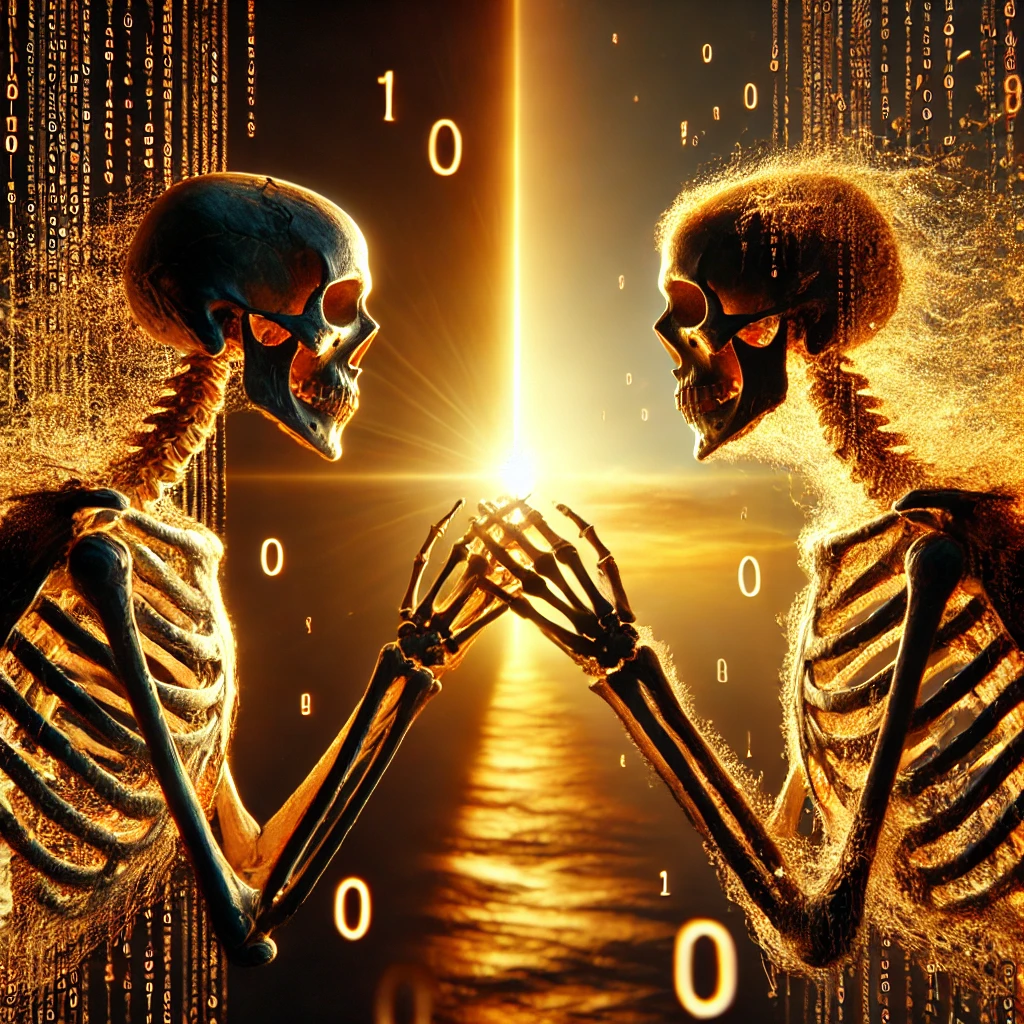

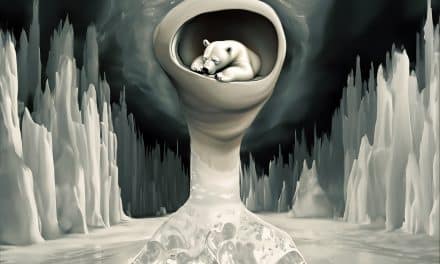
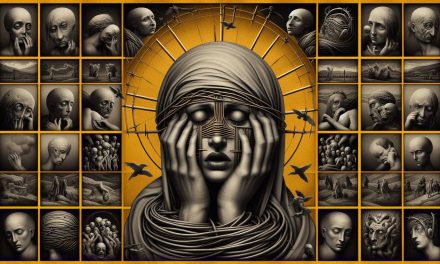








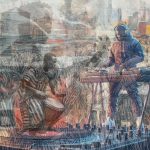
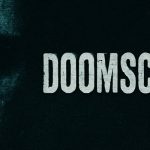
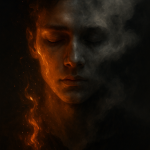


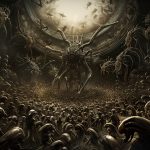

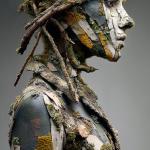









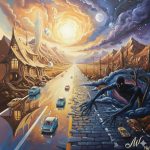
Comments